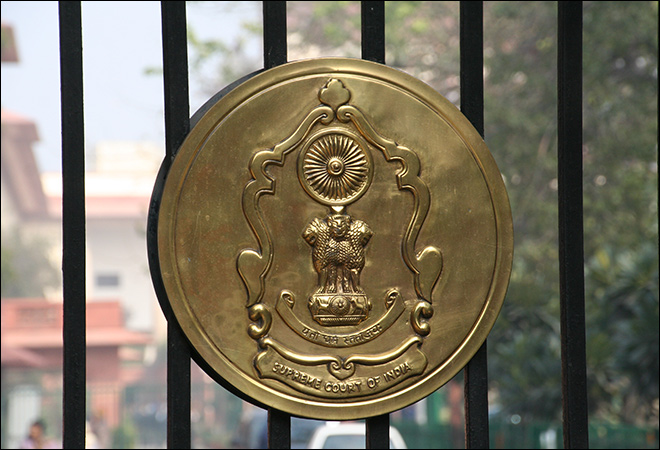
For long, it has been widely speculated that nations will go to war for the control over water, particularly one that is shared between countries such as international rivers. However, contrary to this apprehension, it has been seen that subnational disputes are far more omnipresent, and are much more economically and socially disruptive in nature. India has seen a fair share of such hostilities between states flaring up from time to time over interstate river water. As India has a federal political setup, the approach of the Union government along with the involved state governments is extremely crucial in understanding the ensuing disputes in the country. The Cauvery Conflict between Karnataka and Tamil Nadu, the Ravi-Beas River Water Dispute and the tussle between the basin states of the Krishna River exemplify the major hostilities that posits a humongous federal challenge to river water governance in India.
Subnational disputes are far more omnipresent, and are much more economically and socially disruptive in nature.
Over the years, despite the exigency-driven contingent responses of the Union government by forming tribunals, a host of major impediments like institutional lacunae, lack of political will, inadequate appreciation of the ecological and economic costs of such protracted conflict have constantly evaded a sustainable and holistic approach to this issue based on federal cooperation. This has often led to a fractured landscape of interstate river water governance in India. In order to declutter the quagmire of these conflicts in India, it is extremely critical to understand the context that facilitated the genesis and prolonged lingering of such conflicts. This calls to attention three fundamental structural ambiguities around this issue which continues to shape the conflicts till today.
The Constitutional-legal ambiguity
First, there is a serious ambiguous approach towards the evolution of the legislative and constitutional mechanism regarding the river water disputes in India. This has led to an institutionally ambivalent distribution of power between the Centre and the states as far as management of interstate rivers are concerned, leading to a federal jurisdictional ambiguity. Historically speaking, two major pre-Independence colonial legislation — the Government of India Act 1919 and the Government of India Act 1935 — paved the way for a pattern that eventually shaped the constitutional-legal setting related to interstate river disputes.
Such a pattern laid the foundation of the proposition that while the “use” of river water belongs to the domain of the states, the regulation of the interstate river water and disputes related to the river water sharing between states is the prerogative of the Centre and it has to initiate actions in that regard. This has been reflected in the constitutional setting as laid down by the 1950 Constitution of India which gives the right of ‘use’ to the states and the responsibility of regulation of interstate rivers to the Centre. Such dichotomous and blurred distinction between the governance mandate of the centre and the states reflects a lack of jurisdictional clarity. Hence, creates room for jurisdictional confusion in relation to the interstate river water disputes. As the very definition of “water use” for interstate rivers is dynamic and multidimensional, where actions of one state can affect the nature of access to the river water by other state, the usage of river water hardly remain a matter that is exclusive to the interests of the individual states. In this context, what should be the appropriate role of the centre for ensuring properly coordinated equitable use of interstate river water remains a vexed question while a prolonged state of ‘conflictual federalism’ over interstate river water has persisted in the country.
Two major pre-Independence colonial legislation — the Government of India Act 1919 and the Government of India Act 1935 — paved the way for a pattern that eventually shaped the constitutional-legal setting related to interstate river disputes.
The historical-geographical ambiguity
Apart from the legal-constitutional mandate of governing interstate river water disputes, the historical and geographical factors have also added to the ambiguity in interstate river water governance infrastructure. The colonial legacy of geographical reconfiguration by redrawing of “constructed borders” of the newly formed states have also paved the way for intractable disputes between states formed in the post-Independence India. India comprised of extremely heterogeneous diverse states which includes both category of provinces. The ones which were directly British ruled states as well as the ones which were princely states. Hence, the hastily decided terms of the merging of the princely states with the Indian dominion, the fear of national disunity and the pressure of creating linguistic majority states in order to assuage the demand of ethno-federalism led to creation, merging and further bifurcation of the state boundaries which were done keeping solely the concerns of identity politics and the larger interest of national unity in mind. Such political redrawing of territorial boundaries of the provincial units often undermined the natural historical heterogeneous nature of these states.
 The presence and use of anachronistic rules and treaties as references for present day arbitration of interstate water disputes complicates the issue. Image © Ramesh Lalwani/Getty
The presence and use of anachronistic rules and treaties as references for present day arbitration of interstate water disputes complicates the issue. Image © Ramesh Lalwani/Getty
Due to such creation of states by erecting “artificial” territorial borders, wounds of heterogeneous aspirations of many fractured constituencies in the states remained unhealed, as Simhadri’s study on Telangana reveals. Hence, the primacy of “unity of the nation superseded other considerations of natural resource distribution like the river or potential disputes over these resources.” Interestingly, the Constituent Assembly Debates reveal that the issue of interstate river disputes have occupied very limited space in the priority pyramid of the Constitution makers, hence invoked very limited debate and discussion. As concerns of national unity was the foremost prerogative of the Assembly, especially in the backdrop of the violence of partition, the issue of river water sharing amongst the states appeared to be a relatively less contentious issue at that time. Thereafter, the boundaries of states in India have continued to alter, based on cultural and political factors without considering much regarding the historical and ecological dynamics of these regions. These changes complicate the existing jurisdictional and resource-sharing agreements, including the ones related to interstate river water disputes and becomes sources of interstate political contestation within the repeatedly recreated territorial reality. This also gives rise to conflictual claims of property and user rights over river water by the constantly recreated provincial units in India. An example of this is the Cauvery dispute and the conflictual understanding of property rights over the interstate river. Interestingly, another country in South Asia, Nepal has made the territorial division of its province on the basis of river basins. However, its comparison with India might be incongruent given the stark difference between the expanse and complexity in both the neighbouring countries.
The boundaries of states in India have continued to alter, based on cultural and political factors without considering much regarding the historical and ecological dynamics of these regions.
Furthermore, D’Souza argues that the continuity of colonial structural and imperial designs is at the root of the anomalous legal and jurisdictional tussles related to interstate river water disputes. The colonial era rules and interstate river agreements which were designed by the “externality of colonial rule” have been internalised by still being invoked in the present context in which the contemporary state structures and territorial boundaries have been largely redesigned since independence. The presence and use of such anachronistic rules and treaties as references for present day arbitration of interstate water disputes further complicates the issue.
The institutional ambiguity
The nature of the adjudicatory mandate in case of interstate river disputes has also led to an institutional ambiguity between the tribunals set up by the Centre and the role of the apex court of India — Supreme Court. In a departure from the 1935 Act, the Constitution of India has laid down in Article 262 that the Parliament or the national legislative body would enact a law that would bar the Supreme Court of India from interfering in the interstate water disputes. Hence, this creates a constitutional exception for the Supreme Court which is otherwise mandated to adjudicate all other areas of interstate as well as centre-state disputes in India as enshrined in Article 131 of the Indian Constitution. But, on the other hand, Article 136 also empowers the Supreme Court to hear appeal against the verdict or awards given by all Tribunals and Commissions under its appellate jurisdiction. Hence, if Article 262 deters the highest judiciary from adjudicating interstate river water disputes, article 136 empowers the Supreme Court to hear appeals against the tribunals and also ensure implementation of the tribunal. So, despite the constitutional bar by one provision, the apex court remains the adjudicatory body along with the tribunals in deciding the interstate river water disputes. This creates an institutional ambiguity regarding which body i.e. the tribunals or the Supreme Court is the ultimate adjudicatory power in the realm of interstate river water disputes in India.
Need for clarity
History bears testimony to the fact that such ambiguities have been inextricably interlinked with each other and has heavily shaped the constitutional design, institutional response as well as the political interaction on interstate river water disputes in India. The Interstate River Water Disputes (Amendment) Bill, 2019 and the proposed River Basin Management Bill, 2018 are the two major impending legislations which seek to reform and refurbish the interstate river water governance architecture in India. But it is an imperative to understand that any concrete step towards a more responsive and effective river water governance mechanism, despite its well-meaning intent, would remain chequered unless these deep-rooted ambiguities regarding the issue are constantly comprehended, recognised and interrogated in a bipartisan manner.
The views expressed above belong to the author(s). ORF research and analyses now available on Telegram! Click here to access our curated content — blogs, longforms and interviews.




 The presence and use of anachronistic rules and treaties as references for present day arbitration of interstate water disputes complicates the issue. Image © Ramesh Lalwani/Getty
The presence and use of anachronistic rules and treaties as references for present day arbitration of interstate water disputes complicates the issue. Image © Ramesh Lalwani/Getty PREV
PREV



